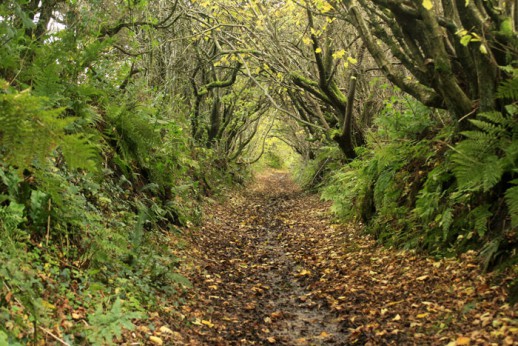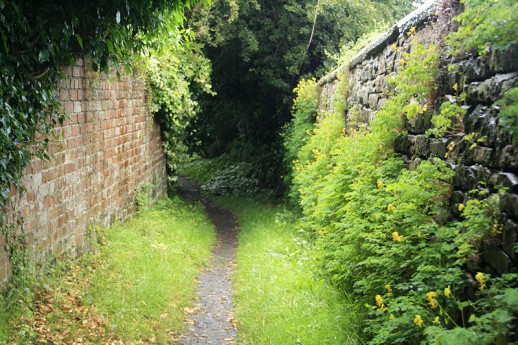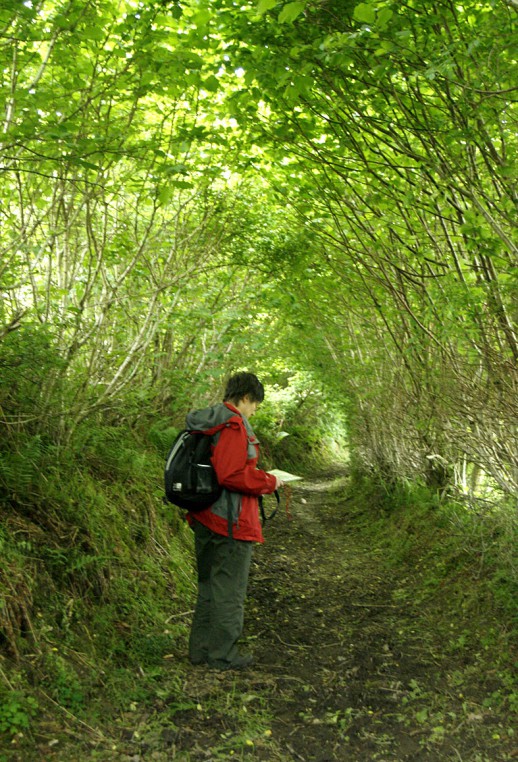 Mackenzie’s Lonning, Cleator Moor
Mackenzie’s Lonning, Cleator Moor
Words and pictures by Alan Cleaver
Cumbrians have as many words for paths as the traditional Eskimos have for snow. It seems it was never enough to say ‘take the path to Torpenhow’. You needed to know if it was a drovers route (very wide), a barf (very steep), a trod (very faint) or perhaps a meandering (a path existing more in the imagination than the real world).
One of the more charming routes for walkers to take is down a lonning – a Cumbrian term for a short path, often ending at a farmhouse. One suggested origin for the term ‘lonning’ is from loan – an old word for the quiet place by the farm where milk and eggs would be sold to villagers.
 Tatie Pot Lonning at Burgh by Sands – a ‘tatie pot’ is a tradition Cumbrian dish – a sort of meat pie.
Tatie Pot Lonning at Burgh by Sands – a ‘tatie pot’ is a tradition Cumbrian dish – a sort of meat pie.
Few lonnings are more than half a mile long. A simple definition may be “a path from A to B”. But many now lead nowhere so perhaps it would be better to say “from A to not-A”. Their names are as charming as the paths themselves: Johnnie Bulldog Lonning (presumably because Johnnie once lived there – and he had a bulldog), Wine Lonning, Blue Bottle Lonning, Thieves Lonning, Dog Lonning, Lovers Lonning, Fat Lonning, Thin Lonning – and for the thinnest of ramblers: Squeezed Gut Lonning.
The last three names relate to the size of the path – the width, like the character, can vary greatly. A few are sunken paths but most are narrow lanes edged by dykes (the Cumbrian term for hedges) and others are open to the full blast of the winds off the Irish Sea or Solway. One characteristic they all seem to share is being home to an abundance of wildlife. These are nature’s corridors in an otherwise sparse and open landscape. Greenfinches, goldfinches, dunnocks, wrens and blue tits neighbour up with badgers, red squirrels and wandering lambs or cattle.
 A rambler stops to check her route in Seacross Lonning, near Wythop Mill, Cumbria.
A rambler stops to check her route in Seacross Lonning, near Wythop Mill, Cumbria.
There is, however, no protection for the humble lonning. Many are being lost through lack of use or are in danger of being ‘upgraded’ to bridleways or minor roads. Should we care? Of course. When man has driven everything to the edge of extinction then it’s the edges that we should be worried about.
You can view a map of Cumbria’s lonnings compiled by Alan here.